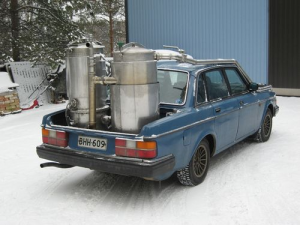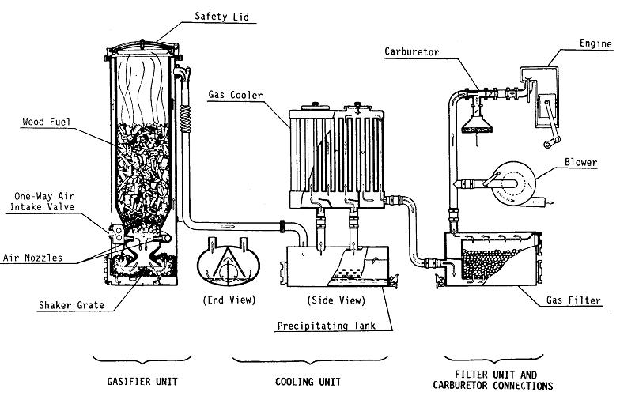 At some point you’ve probably seen one of those post apocalyptic movies like Mad Max, or the more recent Walking Dead series. Do you ever wonder how, after so many years after the apocalypse, their vehicles are somehow still running? And I’m not just talking about maintenance and replacement parts. The gasoline alone would pose a serious problem, and most fossil fuels would be completely used up long before you have to get an oil change.
At some point you’ve probably seen one of those post apocalyptic movies like Mad Max, or the more recent Walking Dead series. Do you ever wonder how, after so many years after the apocalypse, their vehicles are somehow still running? And I’m not just talking about maintenance and replacement parts. The gasoline alone would pose a serious problem, and most fossil fuels would be completely used up long before you have to get an oil change.
Not to mention the fact that gasoline has a rather short expiration date. The most common estimate I’ve heard, is that gasoline begins to degrade after 3 to 6 months. That’s not to say that there wouldn’t be some vehicles still on the road after the grid goes down. They’re just not going to be running on gasoline. Instead, they would likely be using wood for fuel.
If you don’t know what I’m talking about, it’s called wood gasification, and it works by applying heat and pressure to a sealed container filled with organic material like wood, leaves, saw dust, or charcoal. Rather being burned, this process extracts gases like carbon monoxide, methane, and hydrogen from the feedstock, which can then be piped into a combustion engine.
Wood gasifiers became very popular during and after World War Two, when fuel shortages forced people to find creative ways to keep their vehicles running. During the war, over a million wood burning cars were built throughout the world, and half a million were developed in Germany alone. They ran everything from cars to trucks to buses and even tanks. It has the advantage of being fairly energy efficient (definitely more so than burning wood), fuel can be sourced locally, and the ash can be used to fertilize the soil, making it a very self sufficient way to drive around.
However there are a few disadvantages to keep in mind. Wood gas generators are very large and can often weigh several hundred pounds. The feedstock also has a far lower energy density than gasoline or diesel. Typically it takes one pound of wood to travel a mile, whereas a pound of gasoline is about 1/6 of a gallon, and would obviously take you quite a bit further with a modern car.
These vehicles also have trouble accelerating to high speeds, and often take at least 10 minutes to heat up before you can start driving (which would also make Mad Max a pretty boring movie). Despite these drawbacks, wood burning cars would likely be the only way to get most vehicles to run after a major collapse. So how do you build one of these systems?
Well, it’s not an easy project to attempt. You’ll have to be pretty handy, and might need some welding equipment if you want to make it from scratch. To give you a basic idea of how to build a wood gasifier, take a look at this translated diagram that was widely circulated in Germany during World War Two.
FEMA also developed a manual for a wood burning car during the late 80’s. You can check it out for free here. Or if you’re more of a visual learner, you can watch a different gasifier built step by step in this awesome youtube video.
http://youtu.be/X3KipK49v7g
While it may seem like a lot of work for something that you may never end up needing, keep in mind that you can also use hook this system up to a generator. If you have a large property, you probably have a lot of yard waste lying around that could be used to keep your home off the grid.
So if you want to keep your car running after the collapse, do some research on the materials and skills required to build a wood gasifier. Having a running vehicle is a huge advantage during any grid-down scenario, and you’ll be one of the lucky few with a working vehicle, long after Mad Max runs out of gas.

